Exhibitions
| Title | Say Cheeeese~ |
|---|---|
| Period | 14 May 2025(Wed)~27 Jul 2025(Sun) |
| Venue | Special Exhibition Hall 2 |
|
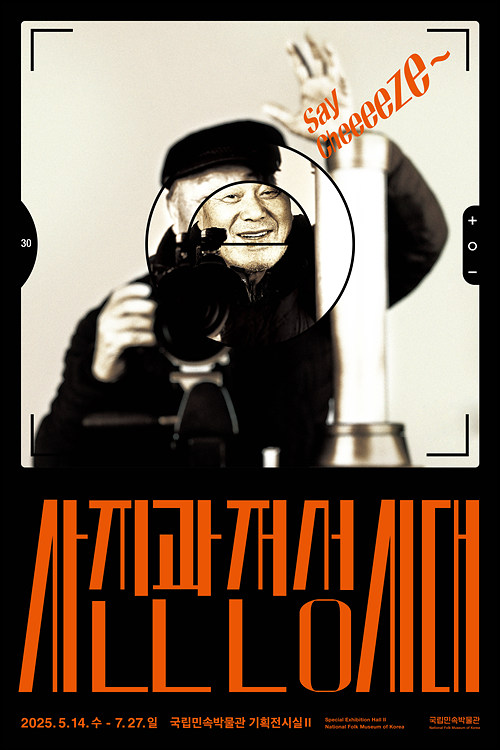 Exhibition OverviewKoreans would visit their neighborhood photo studio not just to have their ID photographs made but also to capture those deeply meaningful moments in their lives that they wished to preserve. These establishments would be relied upon to record everything from a newborn's 100th-day celebration and the child's first birthday to a young couple's engagement and wedding ceremonies and a family elder's formal commemorative portrait late in life. Thus, the photo studio was a special place that remained in step with residents' everyday lives, relating the stories of individual families and generations as well as documenting visual images and keeping memories fresh.
The National Folk Museum of Korea surveyed Korea's photo studios, and 《Say Cheeeese~》has been opened in connection with that project. This special exhibition looks back on how these establishments have changed over time and what they have meant in Korean society. The former and present states of these studios are presented through the words of the photographers who work there. Stories by both the picture takers and those who have had their pictures taken are recounted. The significance of these photographic records can be gleaned from remarks by those whose life moments have been preserved. Thus, you may catch a glimpse of everyday Korean life in the recent past. Changing times have caused the photography business to transform as well, and the friendly neighborhood photo studio is hard to find these days. As always, people continue to want to preserve in pictures how they look and what they are doing at any given time. Some may still go to photo studios to record their special moments. A single photograph can harbor precious memories. Let's go find and open up an old photo album in search of such recollections. 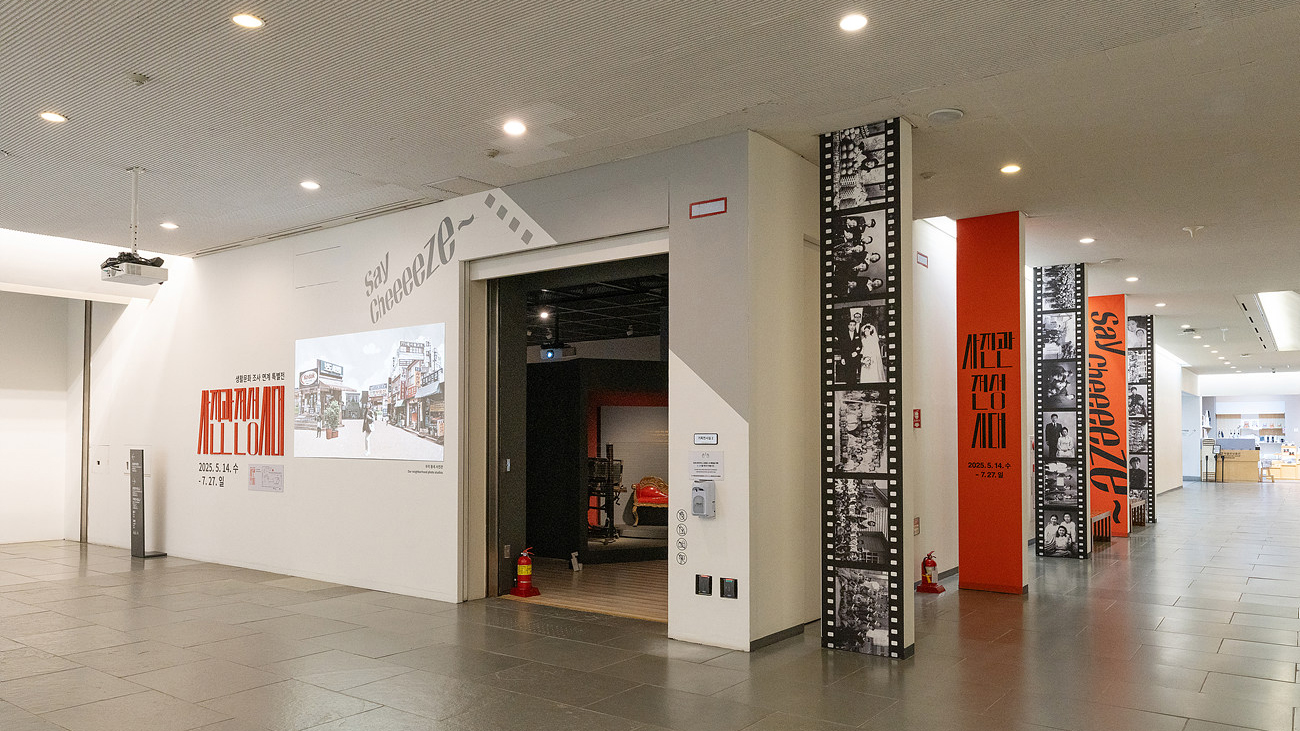
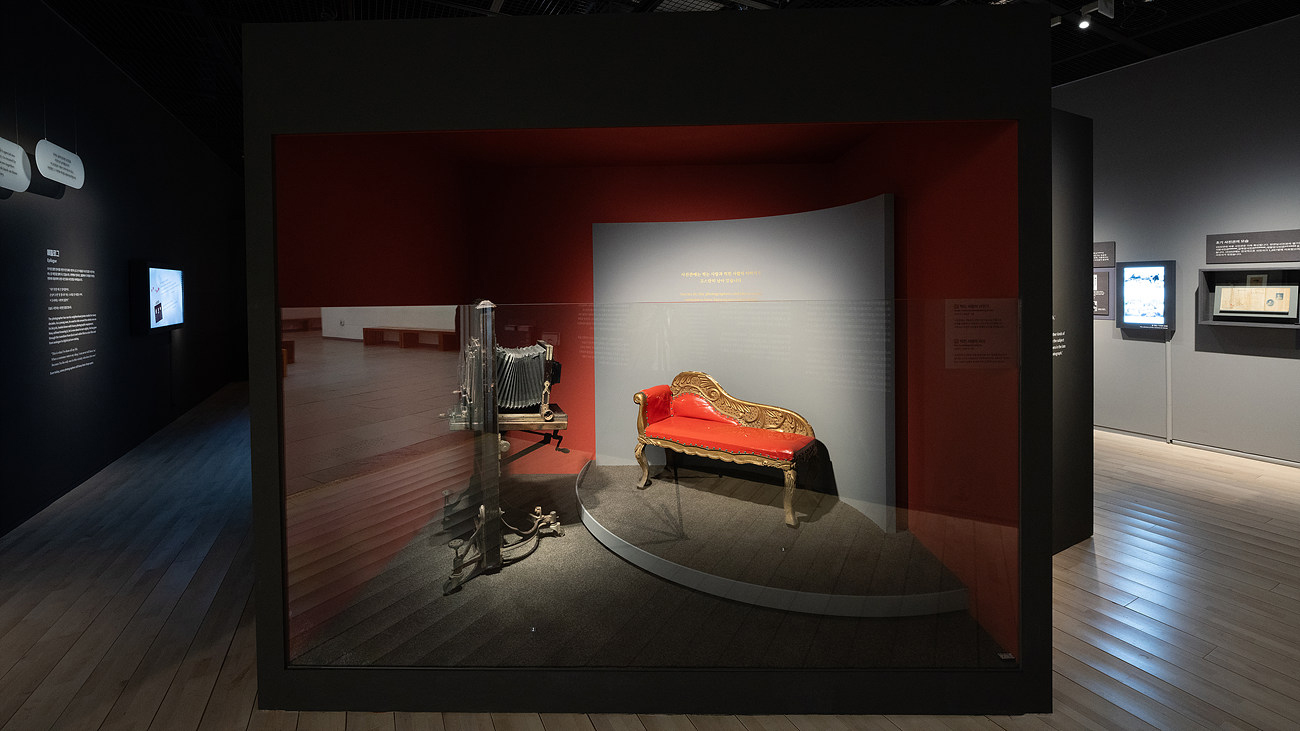 Part 1 Changes in Photo StudiosThe photo studio is where we go to record cherished moments throughout our lifetimes and to save treasured memories. At the time when photographs were solely taken with film cameras, the very act of taking the picture could bring excitement. I would be filled with anticipation when I went to the photo studio to see how the pictures had turned out after the film was developed. Photo studios and development labs were easy to find in every neighborhood, but their numbers steadily decreased after digital cameras came on the scene. Now, people use the cameras on their smart phones, so we do not see many people carrying regular cameras around or going to photo studios.
Part 1-1. Advent and Proliferation of Photography in KoreaPicture-taking methods entered Joseon after the country's ports were opened to foreigners. Japanese photographers opened photo studios in Joseon in the early 1880s. The Cheonyeondang Photo Studio (天然堂寫眞館) was opened in 1907, and the number of Korean-operated photo studios grew after that. Initially, these shops only served members of the imperial family and the noble elite, but over time ordinary people also began to use them in steadily increasing numbers. Once photographs came to be used for identification, the number of photo studios multiplied further.
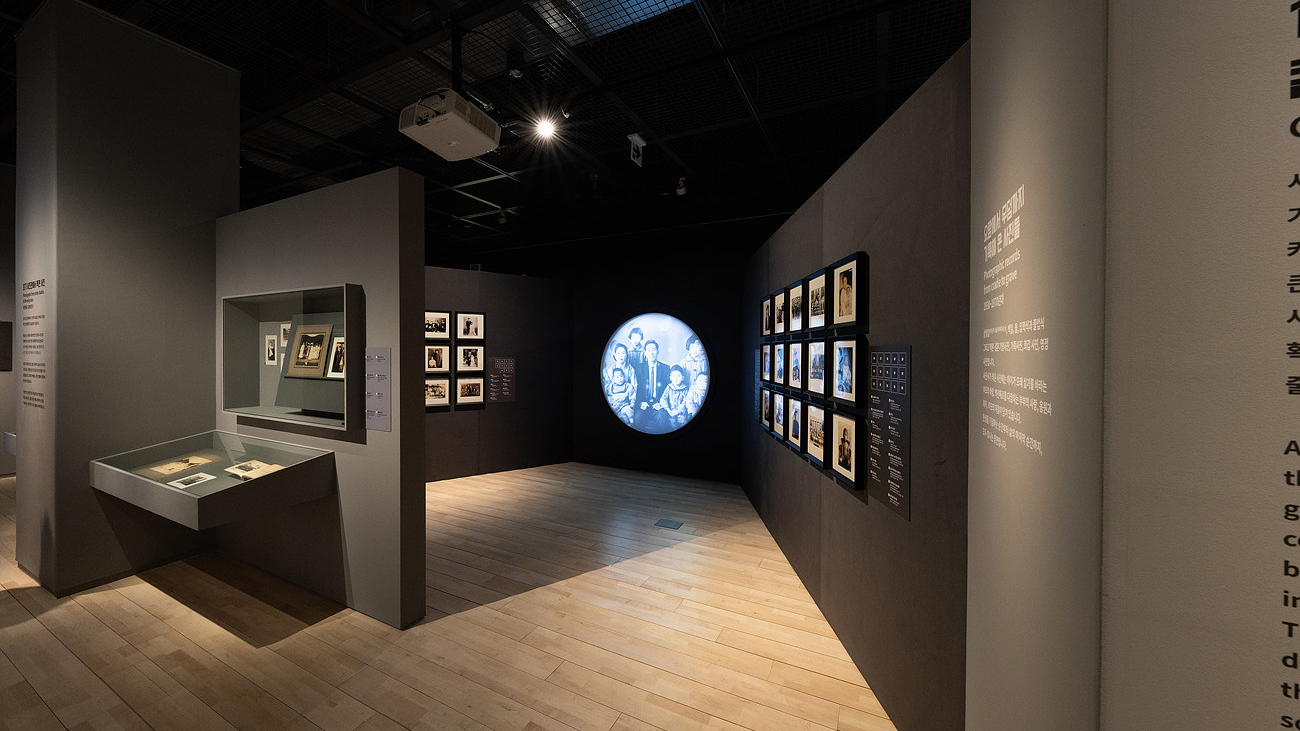 Part 1-2. Color and Digital PhotographyAdvancements in photographic technology transformed the practice of picture-taking as well as the role of photograph services. The transition from black-and-white to color elevated the role of the photo development business, while the switch from analogue to digital impacted the way in which photo studios were operated. The use of digital cameras eliminated the need to develop film and make prints. The images are stored in the camera memory and can be reproduced on a screen, so the time has come when anyone can easily record events in their everyday lives and verify the quality of their snapshots. Thus the traditional role of the photo studio has steadily been diminished.
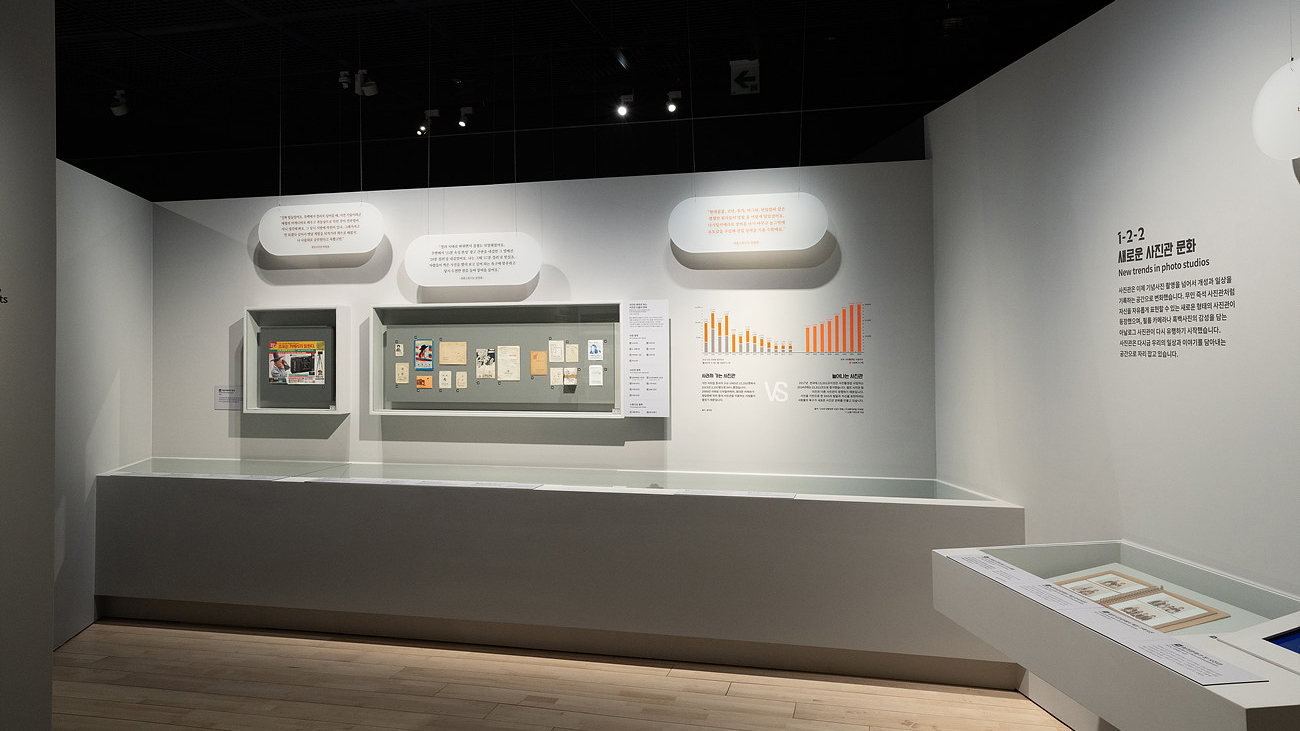 Part 2 The Golden Age of the Photo StudioNeighborhood photo studios were immensely popular in Korea from the 1960s through the 1990s. They were bustling on the days when the five-day market opened. Customers loved to have their pictures taken while standing in front of a backdrop that depicted a well-known amusement park in Seoul or foreign landscape. Local residents would frequent the nearest photo studio each time their family had an important event such as celebrating a baby's 100th day of life, the child's first birthday, or an elder's 60th birthday. As such, this service long occupied a special place in local communities, where people's images and memories were captured.
Part 2-1. Pictures Come from LightThe photographer carefully adjusts the direction and intensity of the lighting as well as the facial expressions and posture of the human subjects. People's important moments are captured through the camera lens, while light is used to create the image. The photographer's attention to detail results in flawless scenes in the pictures.
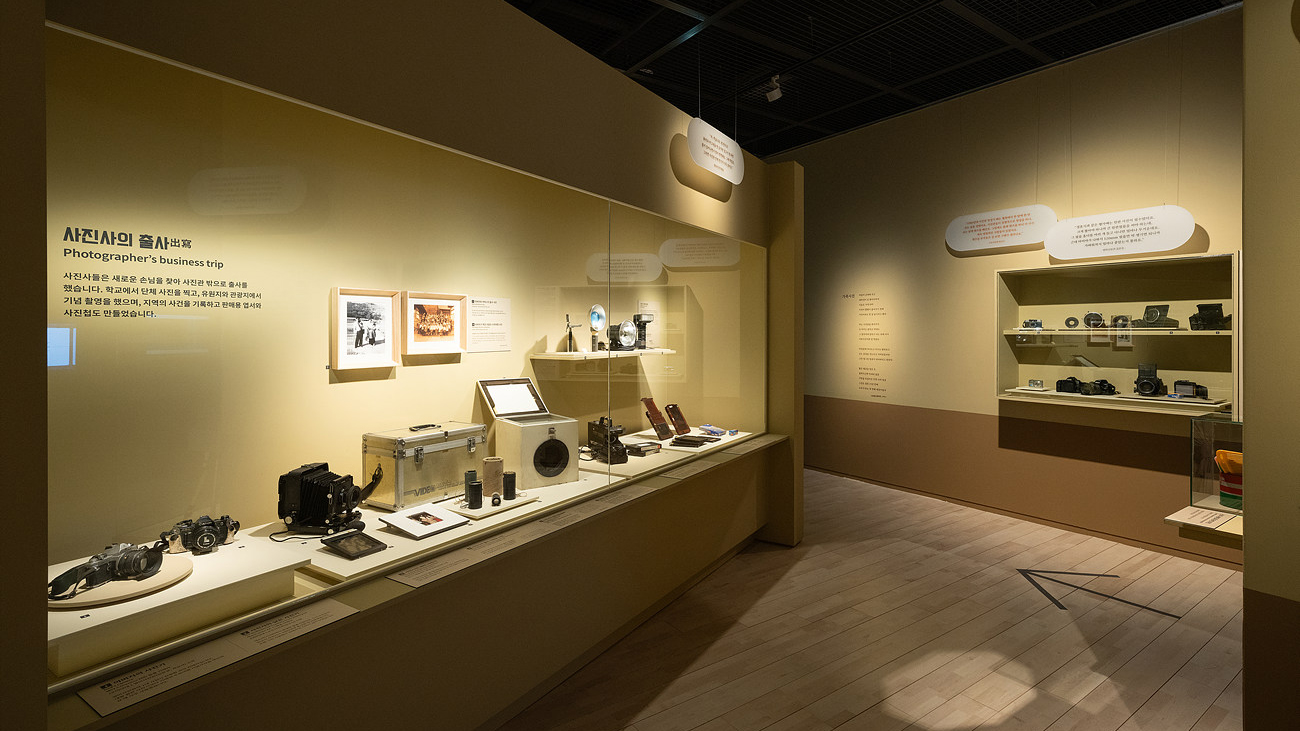 Part 2-2. The Photographer's ArtistryPhotographers are very familiar with the techniques for developing the pictures, touching up the images, and printing them out. Their experience and skills are in play when mixing the photo developer chemicals and making prints from the negatives. To be hired for this job, they must prove their skills by passing a "photo editing test." They are required to eliminate any facial blemishes, make the eyes look sharp, give the skin a fair appearance, and even raise a flat nose. The specific editing methods and skills differ from photographer to photographer, but word gets around about the photo studios that excel at this, and customers flock to those establishments.
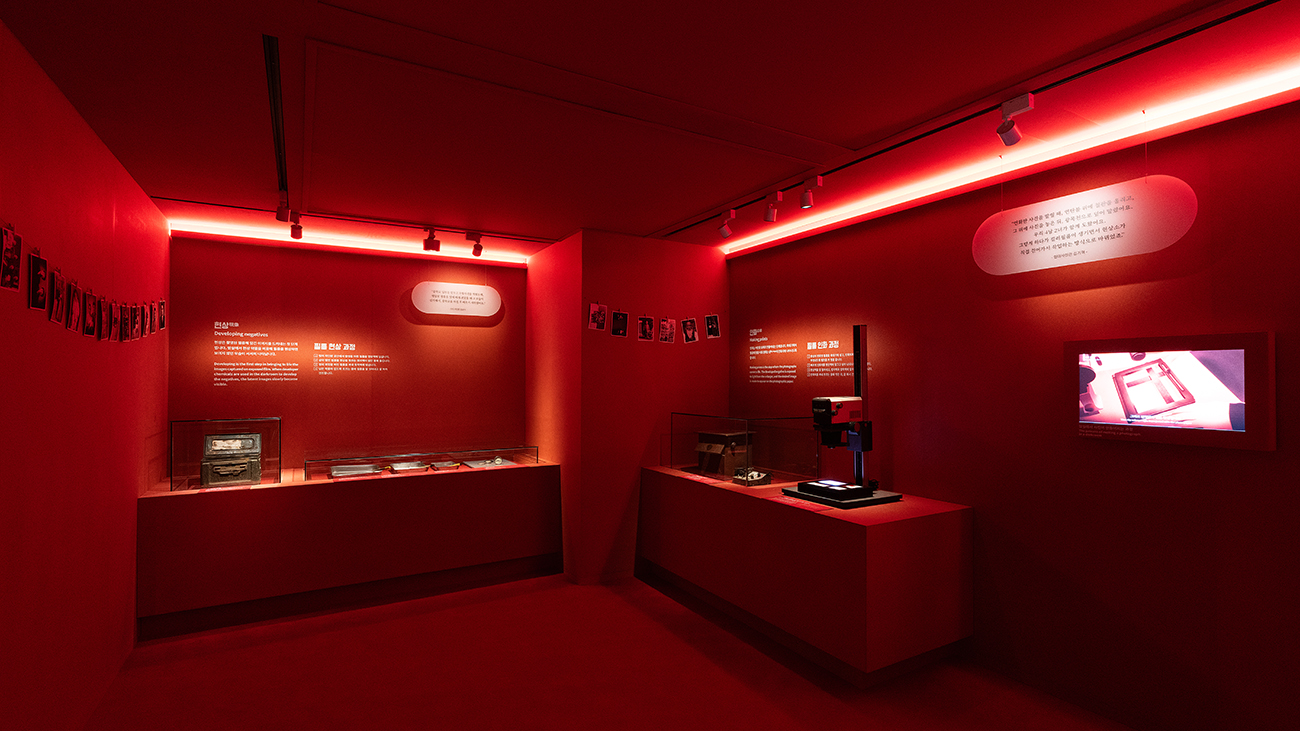 EpilogueThe photographer has run his neighborhood photo studio for many decades. As a young man, he used to ride around the whole area on his bicycle, loaded down with heavy photographic equipment. Now, without knowing it, he is now about to turn eighty. He has gone through the transition from black-and-white film to color film and from analogue to digital picture-taking.
"This is what I've done all my life. When a customer enters my shop, I can never tell them 'no.' Because I'm the only one in this vicinity who does this now." Even today, some photographers still keep their shops open. People everywhere preserve life's special moments with photographs. History is created by bringing these recorded moments together. The photo studios allow us to look back on those memories and history. |
|
| Date | 2025-05-14 |
| 이전글 | The Snake with a Thousand Faces |
|---|---|
| 다음글 | 다음글이 없습니다. |


